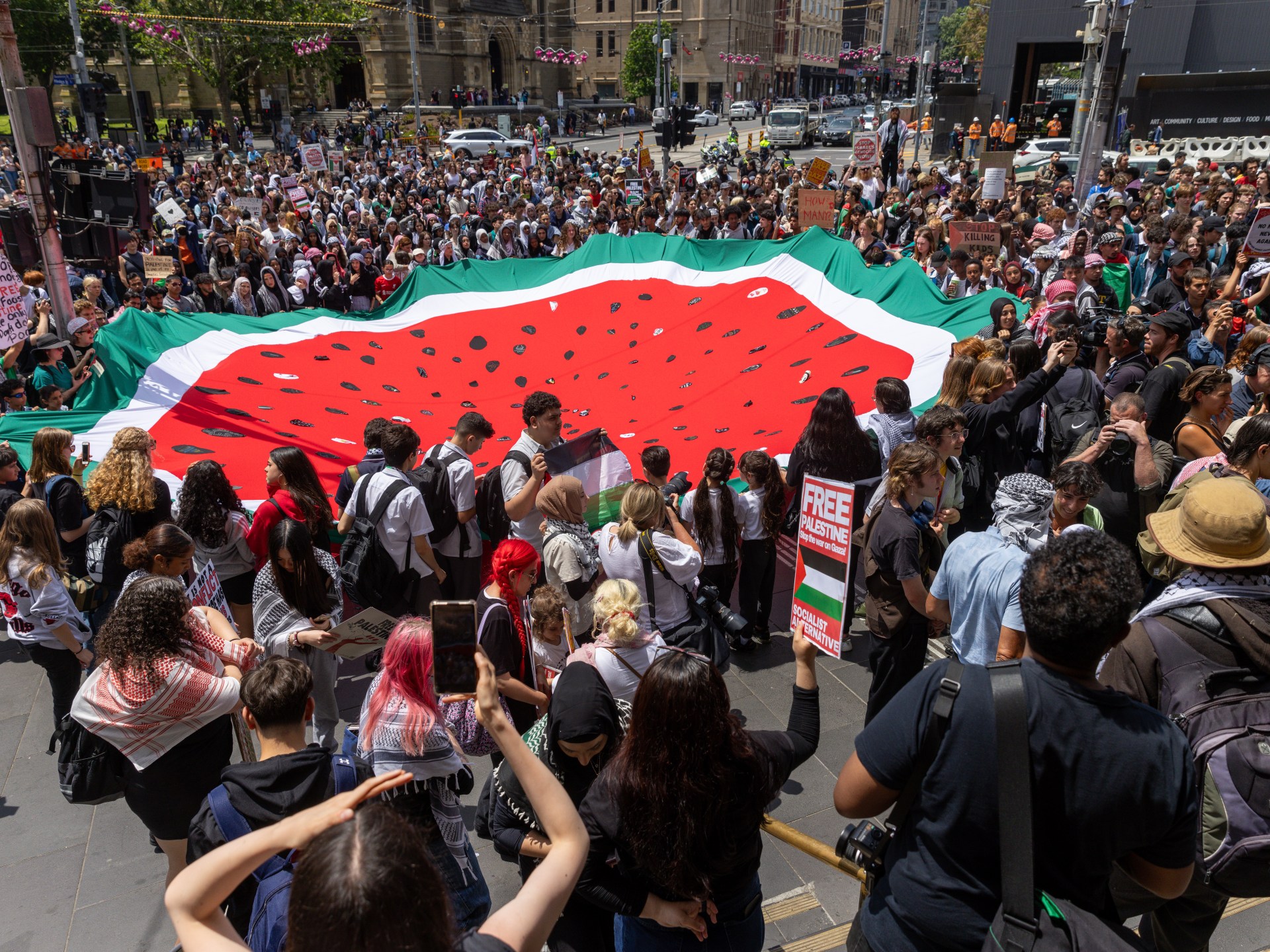In the hot summer, watermelon is considered a symbol of freshness and comfort, as its delicious water harmonizes with the high temperatures, making it an ideal companion for times of rest and relaxation. But have you ever thought about watermelon as a symbol of Palestinian resistance?
We can see in watermelon strength and steadfastness that reflect the will to survive. This delicious fruit is closely associated with the Palestinians, as the colors of the Palestinian flag (black, white, green, and red) match the colors of watermelon fruits when cut into slices.
The symbolism of watermelon in Palestine is due to several factors. Historically, watermelon cultivation was widespread in Palestine, until it became an integral part of the culture and traditions of its people.
During the season, watermelon is not absent from the tables of Palestinians, who prefer to eat it with white cheese and traditional taboon bread. “A type of flat bread”, which is prepared in clay ovens, known as “taboon”, which were used by the Palestinians in ancient times. The bread was named after it, or on stones, as when the fire is lit, it gives it high heat, so the bread is cooked after the stones are left on it. Creates wonderful bubble-like shapes to help make it soft on the inside.
Using watermelon as a flag
The use of watermelon as a Palestinian symbol is not new. This symbol first appeared in 1967, when Israel took control of the West Bank and Gaza Strip and annexed East Jerusalem.
Subsequently, the Israeli government banned the public carrying of the Palestinian flag, deeming it a criminal offense in Gaza and the West Bank.
As a form of protest, and until this ban was overcome, Palestinians began using watermelon – which represents the Palestinian colors – as an alternative symbol.
Palestinians began carrying watermelon slices and displaying them at demonstrations and protest events as a symbol of resistance and steadfastness, and since then, watermelon has become a popular symbol of Palestinian resistance.
Watermelon as an artistic symbol
In 1993, Israel lifted the ban on the Palestinian flag after the Oslo Accords, which stipulated the formation of an autonomous Palestinian transitional authority and granted authority to the Palestinians in part of the West Bank and Gaza Strip, areas that Israel had occupied in the June 1967 war. With the lifting of the ban, the Watermelon is ingrained in the mind.
In 2007, after the Second Intifada, Palestinian artists produced artworks depicting watermelon as a symbol of resistance. Palestinian painter and art critic Khaled Hourani immortalized the legacy of resistance to raising the Palestinian flag by designing a painting for a book titled: “The Self-Atlas of Palestine.” The painting quickly became famous, and it was Displayed in many art galleries around the world.
This has encouraged many other artists to create artworks that use watermelon as a symbol of solidarity.
The symbol made a comeback in 2021, after an Israeli court ordered Palestinian families to vacate their homes in the Sheikh Jarrah neighborhood, in East Jerusalem.
The vision of watermelon – in many Palestinian cartoons, slogans, posters, emojis and many struggle and awareness campaigns – has become a reflection of its use as a true symbol of Palestinians’ adherence to identity and land and the embodiment of willpower and steadfastness in the face of challenges and occupation.
Watermelon in social media
In light of Facebook’s policies and the restriction of access to posts that support Palestine, the site’s pioneers used innovative methods, such as: writing one of the letters in the English language when writing posts, placing pictures of watermelon as a description of the status, or as a picture for the personal account, and other ways to manipulate the algorithms and avoid possible censorship of Posts supporting Palestine or blocking accounts.
Seeing watermelon suggests hope and steadfastness in light of difficult circumstances, and reflects the Palestinians’ desire for freedom, justice, and the establishment of their independent state. No matter how much Israel tries to suppress them, they will find other ways to express themselves.
Before I finished my article, I spent a little time on the search engines “Google”, “Bing” and “Yahoo” on icons used for protest and resistance, such as: the controversial Guy Fawkes “Vendetta” mask, which is linked to the novel “V for Vandetta” written by the British author. Alan Moore, which takes place in England during the November Revolution.
The “Vandetta” mask symbolizes the injustice and grievances that individuals or societies suffer from, as well as the desire of a specific person or persons to achieve justice in any possible way. Likewise, the slogan: “The Fist” was taken as a symbol by a number of opposition movements in the popular protests, so the protesters raised it. In the “Cedar Revolution” in Lebanon, and in the demonstrations of the January 25 revolution in Egypt, and others.
But what surprised me about the watermelon logo is its rich history, and that it may be one of the few logos that uses something natural that belongs to the Earth rather than a symbol created by creative people or a group of people.
It also caught my attention that, unlike other slogans in the world that targeted a passing factional purpose, such as “yellow vests”; In protest against high fuel prices in France, named after the yellow vests that motorists are required to carry in their cars when driving according to French law.






